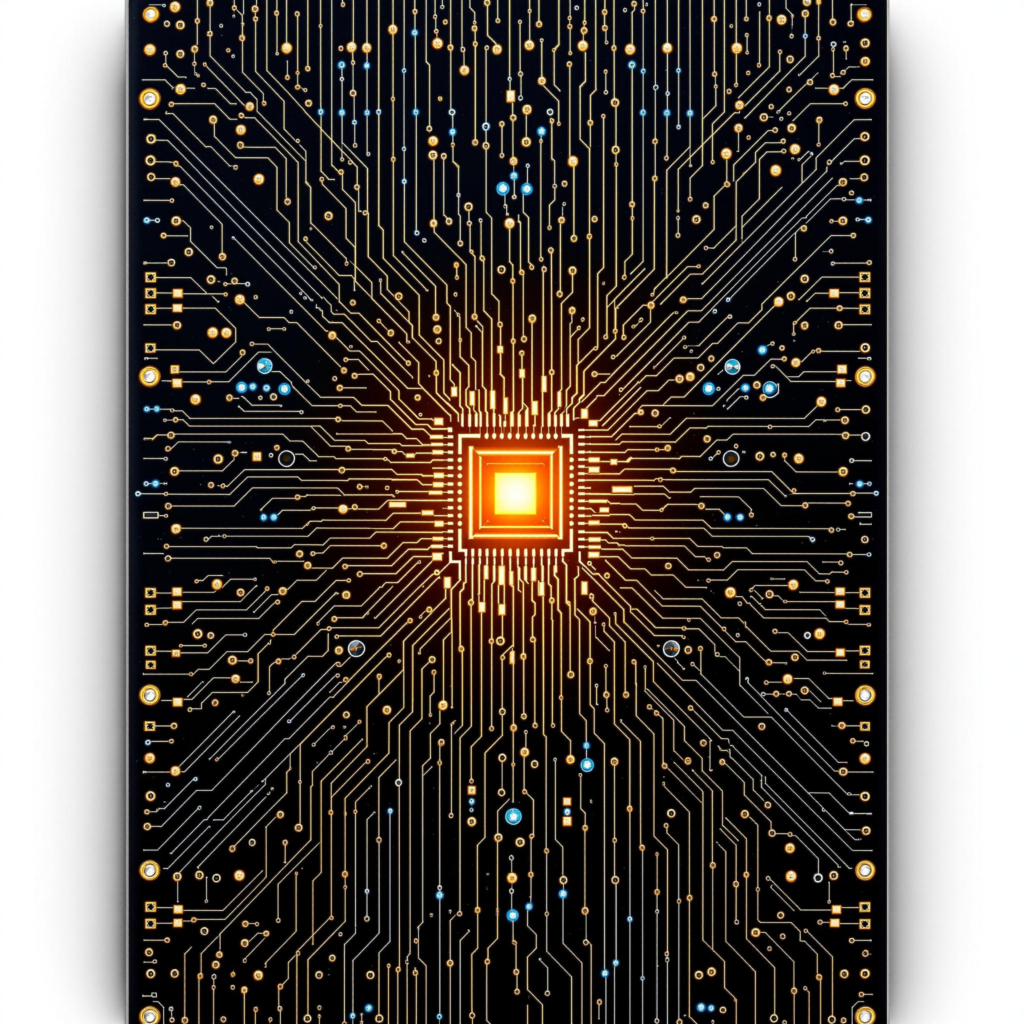In the fast-evolving landscape of tech startups, a compelling digital presence can be the catalyst for success. At the heart of this presence is a well-crafted website—more than just a digital business card, it’s a strategic asset that drives engagement, builds credibility, and converts visitors into users or customers. For tech startups striving to bring cutting-edge innovation to market, simplifying complexity through thoughtful web design is not only desirable—it’s essential.
Innovative products and groundbreaking ideas often come with intricate technical details that can easily overwhelm the average visitor. Without strategic web design, even the most revolutionary technologies can be lost in translation. That’s why tech startups must invest in creating websites that distill complex ideas into engaging, accessible, and intuitive experiences. The challenge is to communicate sophistication without alienating users. Achieving this balance is where simplified web design becomes a game-changer.
The Role of Web Design in Tech Startup Growth
Startups are often racing against time—whether it’s funding deadlines, product launches, or market competition. A powerful web presence enables these companies to articulate their value quickly, showcase product capabilities, and build rapport with investors, customers, and partners. Moreover, a streamlined website becomes a reliable channel for education, onboarding, and support.
Web design serves not only aesthetic purposes but also functional and strategic goals. It establishes brand identity, supports storytelling, and encourages user interactions—all while guiding visitors down a well-planned conversion funnel. This is especially critical for SaaS, AI, FinTech, HealthTech, and other verticals where value propositions are rooted in technical excellence.
Embracing Minimalism: Less is More
One of the most effective web design strategies for simplifying complexity is embracing minimalism. In the tech world, where products are often complex by nature, a minimalist design helps cut through the noise and draw attention to what really matters.
Minimalist design is more than just an artistic choice—it’s a usability enhancer. By eliminating unnecessary elements, minimizing distractions, and using whitespace effectively, a minimalist layout allows users to focus on key messages and actions. This approach also aligns well with performance optimization, as it often results in faster loading times, better responsiveness, and a smoother user experience across devices.
Practical Tips for Minimalist Web Design:
- Limit Color Palettes: Stick to two or three brand-aligned colors to maintain visual cohesion.
- Use Consistent Typography: Simplify font choices for better readability.
- Prioritize Key Elements: Highlight calls to action, product benefits, and navigation without clutter.
- Whitespace is Strategic: Use spacing to separate content logically and reduce cognitive load.
By keeping the design clean and intentional, startups can guide users toward meaningful engagement, ensuring that innovation doesn’t get buried under unnecessary visual noise.
Crafting Clear, Compelling Messaging
Tech startups frequently fall into the trap of using jargon or overly technical language that alienates non-expert users. However, effective communication hinges on clarity. Your website should serve as the bridge between complex technology and user understanding.
Start by identifying your unique value proposition (UVP) and ensure it’s prominently displayed above the fold. This message should be clear, direct, and emotionally resonant. Visitors should immediately understand what your product does, why it matters, and how it benefits them.
Strategies for Clear Messaging:
- Use Plain Language: Avoid acronyms and technical terminology unless absolutely necessary.
- Elevator Pitch Format: Your homepage should quickly convey your core offering in two sentences or less.
- Use Visual Aids: Infographics, diagrams, and icons can help explain abstract concepts.
- Break Content into Sections: Use headers, bullet points, and short paragraphs for easier scanning.
Clarity in messaging not only helps your audience understand your product—it also improves SEO performance. Search engines favor content that answers questions, uses natural language, and aligns with user intent.
Interactive Demonstrations: Show, Don’t Just Tell
One of the most powerful tools in simplifying complex technology is interactivity. Startups can significantly enhance user comprehension and engagement by integrating dynamic elements that showcase their product in action.
Types of Interactive Elements to Include:
- Product Demos: Allow users to explore features through guided interactions or sandbox environments.
- Explainer Videos: Short, animated videos that break down how your product works.
- Walkthroughs and Tours: Step-by-step guides that simulate onboarding or key user flows.
- Live Previews: Embed real-time simulations of software or platform functionality.
Interactive content increases dwell time and fosters hands-on understanding. This not only boosts user retention but also positively impacts SEO through reduced bounce rates and increased session durations.
User-Centric Design: Designing for Humans
A user-centric approach prioritizes the real needs, behaviors, and pain points of your audience. In other words, don’t design for engineers—design for end users.
Conducting Effective User Research:
- Surveys and Interviews: Understand pain points, desires, and the context in which your product is used.
- User Personas: Develop detailed profiles to guide design decisions.
- Journey Mapping: Visualize the steps users take from discovery to conversion.
- Usability Testing: Observe real users as they interact with prototypes or existing pages.
Design Considerations:
- Accessibility: Ensure your site is usable by people with disabilities (e.g., screen reader compatibility, keyboard navigation).
- Responsive Design: Optimize for different devices and screen sizes.
- Loading Speed: A delay of even a few seconds can cost conversions.
- Intuitive Navigation: Users should know where to go without needing a manual.
User-centric design isn’t just about empathy—it’s about effectiveness. By aligning the website with user expectations, startups can reduce friction and improve conversion rates.
Structuring Content for Maximum Impact
How information is organized on your website matters as much as the content itself. Tech startups benefit from a clear, hierarchical content structure that mirrors the user’s thought process.
Key Content Structuring Techniques:
- F-Pattern and Z-Pattern Layouts: Arrange content in patterns that match typical eye-tracking behavior.
- Pillar Pages and Topic Clusters: Create long-form content supported by interlinked subpages to improve SEO.
- Progressive Disclosure: Reveal information gradually as the user expresses interest, reducing initial overwhelm.
- Call-to-Action Placement: Strategically position CTAs at key decision points to maximize conversions.
Effective structure not only enhances usability but also reinforces SEO by improving crawlability, increasing page relevance, and encouraging internal linking.
Leveraging SEO Best Practices for Visibility
A well-designed website is only effective if people can find it. For tech startups, search engine optimization is a critical component of any digital strategy.
On-Page SEO Essentials:
- Keyword Research: Target queries your ideal audience uses when searching for solutions.
- Meta Descriptions and Title Tags: Ensure every page has a compelling, keyword-rich snippet.
- Header Tags: Use H1, H2, and H3 tags to establish a content hierarchy.
- Alt Text for Images: Describe visuals to boost accessibility and search engine understanding.
Technical SEO Considerations:
- Mobile-Friendliness: Google prioritizes mobile-first indexing.
- Page Speed Optimization: Compress images, minimize scripts, and leverage caching.
- Clean URLs: Use readable and keyword-optimized link structures.
- Secure Browsing: Implement HTTPS to ensure user data protection and gain SEO trust signals.
Combining strategic content creation with technical optimization ensures that your site not only attracts visitors but also performs well across search engines.
The Power of Visual Storytelling
Startups are in the business of telling stories—of innovation, disruption, and transformation. Web design offers a canvas for visual storytelling, allowing you to communicate values, vision, and differentiation.
Elements of Effective Visual Storytelling:
- Hero Imagery: Use high-impact visuals that immediately convey purpose and personality.
- Custom Illustrations: Replace stock photos with illustrations that align with your brand identity.
- Micro-Animations: Guide users and add subtle delight to interactions.
- Consistent Iconography: Reinforce messaging through intuitive visual cues.
When done well, visual storytelling enhances brand memorability and emotional connection—critical for early-stage startups trying to make a lasting impression.
Building Trust Through Transparency
Trust is a key currency in the tech world, especially for startups lacking established reputations. Your website should instill confidence from the first click.
Trust-Building Techniques:
- Team Pages: Showcase the people behind the product with photos and bios.
- Testimonials and Reviews: Feature endorsements from real users and partners.
- Case Studies: Share success stories with tangible outcomes and data.
- Security Badges and Certifications: Display compliance with industry standards (e.g., GDPR, SOC 2).
Transparency in content and design helps users feel secure in their decision to engage, trial, or buy.
Optimizing the Conversion Funnel
Design decisions should always map back to business goals. Whether it’s signing up for a free trial, booking a demo, or subscribing to a newsletter, your website must guide users through the conversion funnel.
Funnel Optimization Techniques:
- Lead Magnets: Offer valuable content in exchange for user information.
- A/B Testing: Experiment with different layouts, copy, and CTAs to find what resonates best.
- Behavioral Triggers: Use exit-intent popups, scroll-based animations, and timed modals to capture attention.
- Retargeting Integrations: Embed pixels and analytics tools to power personalized remarketing campaigns.
A frictionless funnel can dramatically increase ROI, enabling startups to scale efficiently with digital marketing efforts.
Future-Proofing with Scalable Design Systems
As startups grow, their website must evolve. A scalable design system ensures consistency, efficiency, and flexibility across future iterations.
Key Components of a Design System:
- Reusable Components: Design buttons, cards, and layouts that can be reused across pages.
- Brand Guidelines: Define rules for typography, color, and imagery.
- Documentation: Maintain records of UI decisions and patterns for new team members.
- CMS Integration: Empower non-technical staff to manage content without disrupting design integrity.
By future-proofing the website, startups can adapt quickly to market demands, product changes, and evolving user needs.
Final Thoughts: Strategic Simplicity for Long-Term Success
Simplifying complexity is not about oversimplifying—it’s about elevating understanding. In the digital age, your website is the first impression, the conversation starter, and often the conversion point. For tech startups, this means web design must do more than look good—it must communicate, educate, and convert.
By embracing minimalist principles, articulating value with clarity, integrating interactive demonstrations, and centering the user in every decision, tech startups can create web experiences that translate complex innovation into compelling engagement.
In doing so, they don’t just bridge the gap between technology and humanity—they build a launchpad for growth, trust, and long-term impact in an ever-competitive tech ecosystem.


One Response
Recent experiences with a solution crafted to simplify web design complexity for tech startups have proven nothing short of transformative. The product harmoniously blends modern design aesthetics with functional efficiency, making it a standout choice for anyone looking to elevate their online presence. Holding this innovative approach in hand has revealed superb attention to detail—from its intuitive layout to the refined navigation options that speak volumes about quality and usability.
Every element seems meticulously designed with the end-user in mind. In an industry often plagued by overly complicated interfaces and steep learning curves, this solution excels at cutting through the clutter and offering a streamlined experience. The solid construction and thoughtful design reflect a deep understanding of the tech startup landscape, ensuring that even those with limited technical expertise can grasp its full potential.
Attention to functionality is evident in every facet of the design, and the value it delivers is enhanced by its flexibility and scalability. The ease with which one can adapt the design to specific needs has made it an invaluable asset for busy entrepreneurs and seasoned developers alike. After thoroughly testing different aspects, including user interface responses and backend integrations, satisfaction with its performance has been consistently high.
The balance between aesthetics and functionality is precisely what sets this product apart in a competitive market. Its subtle design cues and robust functionality address both current and future needs, making it as reliable as it is forward-thinking. When exploring solutions that cater to the intricate requirements of tech startups, this option proves to be a smart investment that doesn’t disappoint. The overall experience has instilled confidence in its long-term value—one that recommends it for anyone seeking to simplify their web design challenges without sacrificing quality.